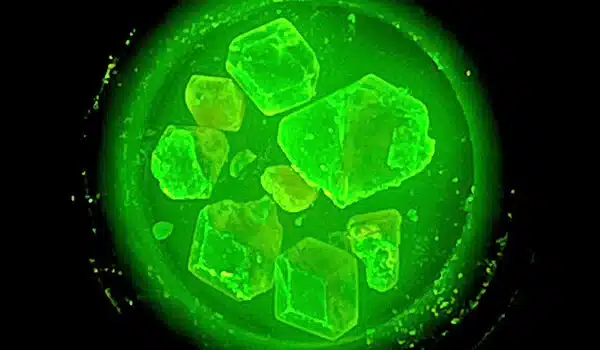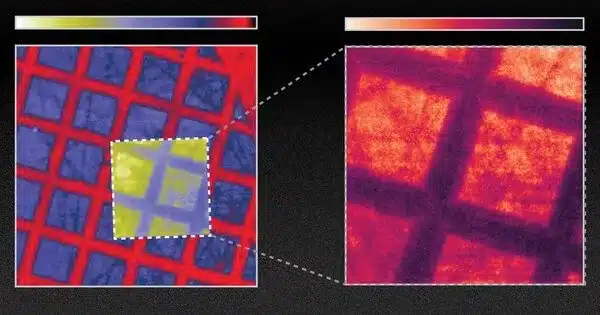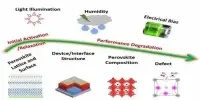Scintillators are materials that emit light when exposed to radiation. Researchers have been working on developing scintillator materials with improved efficiency and sensitivity. By optimizing the composition and structure of these materials, scientists have been able to enhance their performance for various types of radiation, including gamma rays and X-rays.
Improving materials for radiation detection and imaging technology is a critical area of study with numerous applications in healthcare, nuclear power, and security. Scientists can improve the sensitivity, resolution, and reliability of radiation detection devices and imaging systems by improving these materials.
Researchers at Florida State University have created a new generation of organic-inorganic hybrid materials that can improve image quality in X-ray machines, CT scans, and other radiation detection and imaging technologies.
Professor Biwu Ma from the Department of Chemistry and Biochemistry and his colleagues have developed a new class of materials that can act as highly efficient scintillators, which emit light after being exposed to other forms of high energy radiations, such as X-rays.
Reducing the radioluminescence decay lifetime of scintillators to nanoseconds is an important breakthrough. Using a hybrid material made up of both organic and inorganic components means that each component can be used for the part of the process where it is most effective.
Professor Biwu Ma
The team’s most recent study, published in Advanced Materials, builds on previous work to develop better scintillators. The new design concept generates materials that emit light in nanoseconds, orders of magnitude faster than previously developed materials, allowing for improved imaging.
“Reducing the radioluminescence decay lifetime of scintillators to nanoseconds is an important breakthrough,” said Ma. “Using a hybrid material made up of both organic and inorganic components means that each component can be used for the part of the process where it is most effective.”
Scintillators are widely used in imaging applications. They are used in health care settings, security X-rays, radiation detectors, and other technologies and would benefit from improved image quality.
Ma’s team’s new generation of organic metal halide hybrid scintillators outperforms previous generations in numerous ways. Aside from having a significantly better radioluminescence response, the manufacturing process is simpler than that of other scintillators, and it uses abundant and inexpensive materials.

Consider a scintillator to be a sort of energy translator, taking a form of high energy radiation, such as an X-ray, and converting it to visible light. Less radiation passes through denser parts of an object, which can be used to distinguish higher-density objects like bones or metal from lower-density ones like soft tissue. The radiation that passes through an object then interacts with the scintillator, producing visible light that is detected by a sensor and used to create an image.
Scintillators of today primarily use inorganic materials to convert high-energy radiation into visible light for image production. These materials are rigid, contain rare Earth elements, and require high-temperature, energy-intensive manufacturing processes.
Ma and his team have been working on zero-dimensional organic metal halide hybrids, with which they have performed pioneering research since 2018. These organic-inorganic hybrids are made of small groups of negatively charged inorganic components, called metal halide clusters, and positively charged organic molecules. They’re “zero-dimensional” at the molecular level because the metal halide clusters are fully isolated and surrounded by organic molecules.
The metal halides absorb high energy radiation and emit visible light in the first version of scintillators based on this material. Metal halide components and organic molecules collaborate in this latest iteration. Metal halides absorb high-energy radiation and transfer it to organic components that emit visible light.
Organic molecules emit light on the nanosecond time scale, which is much faster than the microseconds or milliseconds required by metal halides. “The faster the decay of radioluminescence, the more precisely we can measure the timing of photon emissions,” Ma explained. “This results in higher image resolution and contrast.”
Ma and his colleagues have filed patents on organic metal halide hybrid scintillators with the assistance of the FSU Office of Commercialization. The GAP Commercialization Investment Program of the office provided funding to develop the technology for potential partnerships with private companies, which would make the scintillators more widely available.
“This is a continuation of our push for better materials over the years, from 2018, when we discovered this class of materials, to 2020, when we used them for scintillation for the first time,” Ma explained. “This is yet another major breakthrough.”















